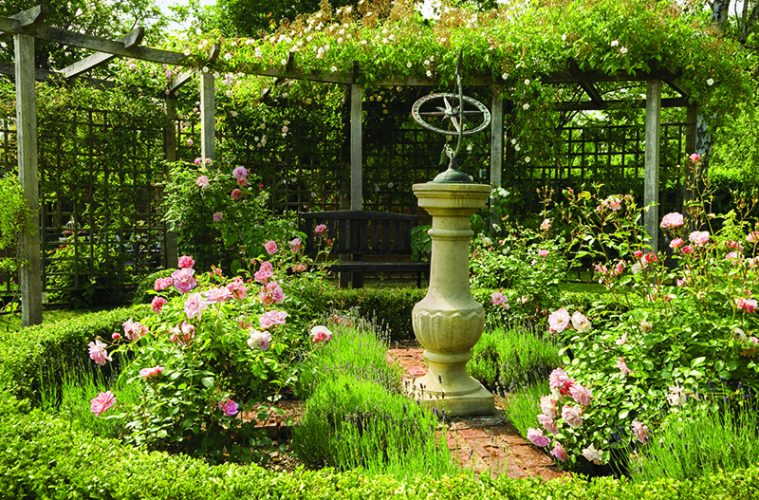Oftentimes, when it comes to screening in the landscape, people opt for a fortress-like barrier—one species planted around the perimeter, six to eight feet on center. Sure, that’s one way to go, but it’s not the most imaginative, and it can lead to problems. Wherever there’s a monoculture, there’s risk of losing any number of its members (or even the whole lot) to disease, pests, or environmental stressors. And what an eyesore to have holes in that green wall; finding matching replacement plants is nearly impossible, and waiting for new additions to catch up in size can be frustrating.
There are better options. Whenever possible, choose a planting scheme that will result in a naturalistic screen. Determining a design likely to succeed is context dependent. For expansive estate properties with acreage of open space, for instance, mixed masses of both deciduous and coniferous trees and shrubs add structure, while perennials lend seasonal interest. The occasional specimen tree—preferably one with year-round interest—is a nice addition when situated so as to provide a “punctuation” or focal point. Multiple staggered rows of trees and shrubs will comprise an attractive barrier that not only gives definition to the landscape but also serves as a windbreaker, which is a desirable attribute on large, almost park-like properties. (In fact, looking to Olmsted-designed parks for inspiration in terms of plant selection and layout can be fruitful.)
A standard suburban lot—where utility lines, walkways, driveways, roads, and zoning requirements are immediate considerations—lends itself nicely to a mix of smaller ornamental trees and mid-size shrubs planted in groups of threes and fives. Cutting biomorphic border beds in which to stagger plants will break up the monotony of row plantings and, most likely, bear a healthier planting, as air circulation is improved when plants are offset. (This design also makes pruning easier, as the entire plant is accessible. When planted in rows, there is a tendency for die-off where plants abut one another. Lack of sunlight, together with poor air circulation, is a common reason for the “browning out” often seen in hedges.)
A small courtyard or tightly situated urban setting would do well with vine-covered trellises, planter boxes, and/or espaliered fruit trees. More formal designs, with strong vertical elements—as seen in Italian-style gardens—are especially effective in this context. Structural components in the form of climbing frameworks add another layer of interest and further definition.
No matter the space, the general principles for effective, attractive, and natural-looking screening are the same: diversify and stagger. Fortress walls belong to the Middle Ages.
Article appears in the Fall 2015 issue of Northshore Home magazine.

